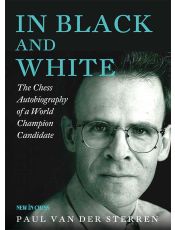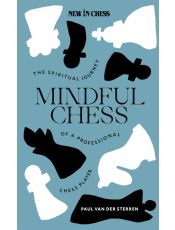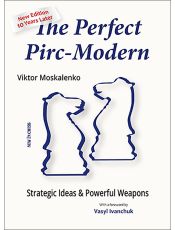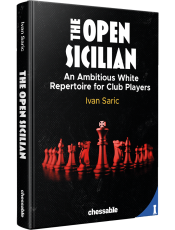A blast from the past
These book reviews by Matthew Sadler were published in New In Chess magazine 2024#1
There are many wonderful chess books that instruct you, inspire you with unexpected new ideas or make you think about chess strategy in a fresh way. However, there is also a very rare type of writing that essentially puts a mirror in front of your soul as you read it.
 We start off this month’s reviews with a blast from the past! Dutch grandmaster Paul van der Sterren’s autobiography was first published in the Dutch language in 2011 as Zwart op Wit, looking back on an eventful career that stretched from first beginnings in 1969 to his retirement from professional chess in 2001. I was just starting to emerge from retirement when Zwart op Wit came out and didn’t catch it the first time around so I was intrigued to read the English translation appropriately entitled In Black and White.
We start off this month’s reviews with a blast from the past! Dutch grandmaster Paul van der Sterren’s autobiography was first published in the Dutch language in 2011 as Zwart op Wit, looking back on an eventful career that stretched from first beginnings in 1969 to his retirement from professional chess in 2001. I was just starting to emerge from retirement when Zwart op Wit came out and didn’t catch it the first time around so I was intrigued to read the English translation appropriately entitled In Black and White.
Just before I forget, I have to mention how impressed I was by the quality of the translation by Peter Boel. I don’t think Peter is a secret native English speaker, but it reads absolutely beautifully! The text and analyses – mainly compiled between 2006 and 2010 – have been left intact and uncorrected by engines. Van der Sterren explains: ‘I hope the reader will appreciate that since this book was written by a man looking back on his chess career just a few years after that career had finished, updating the perspective and the insights he then had by some fifteen years would radically alter the content. It would in fact mean a completely new book. And while writing one autobiography remains perhaps within the bounds of socially acceptable vanity, writing two would definitely be crossing the line.’
It struck me all of a sudden that I’m not sure how well-known Paul is nowadays to the non-Dutch readership. My own experience in 2010 when I played a small number of games again after being retired for a few years was somewhat chastening. Chess changes ever more quickly and it was obvious that few recent players knew who I was (it still happens a lot, by the way!). I’m a couple of generations younger than Paul, but during my professional career (1990-1998), Paul was a fixture: one of a sizeable group of extremely strong Dutch players, each completely different in style. A colleague whose games you noted so you could harvest opening ideas from them (in 1.d4 and the Queen’s Gambit Declined for me).
Strangely enough, I don’t think I ever really spoke to Paul during my professional career but we played three games, which ended 2-1 to him – all Black wins! – including an important loss in the Linares 1995 zonal tournament that ended my qualification hopes. It was funny / slightly painful to see that this game was relegated to the very briefest of mentions in Paul’s autobiography while it meant the world to me! I can certainly understand why though as it wasn’t a remarkable game in any sense. Simply that in a tense situation, Paul displayed his best qualities of stable play in his beloved Queen’s Gambit Declined against an opponent whose nerves had reached breaking point and was unable to deal with the situation.
I was expecting to enjoy this book, simply because – despite still being a chess nerd – I’ve always loved stories about the players behind the moves. After all, reading Edward Lasker’s Chess Secrets I Learned from the Masters as a child until it fell apart in my hands is perhaps the single greatest reason why I fell in love with chess forever. However, I wasn’t expecting to be so overwhelmed by it. I think it’s simply the finest chess book I’ve ever read.
There are of course many wonderful chess books out there that instruct you, inspire you with unexpected new ideas or make you think about chess strategy in a fresh way. However, there is also a very rare type of writing that essentially puts a mirror in front of your soul as you read it. As you move deeper into Van der Sterren’s sometimes harrowing, sometimes positive account of his competitive career, you suddenly realise that you’ve been re-living your own experiences just as much as the story in front of you.
It made me think in some strange way of one of my favourite books (also Jon Tisdall’s!): The Unconsoled by Kazuo Ishiguro. That book features a famous concert pianist who arrives in a city to play a concert but is pulled in all directions by appointments and commitments he cannot remember, sinking ever deeper into confusion as his doomed attempts to re-establish a measure of self-control are frustrated by life’s vagaries and his own fragile mental state.
It spoke to me as a chess player, forever unknowing when good form would bless him, when she would leave and when/if she would ever return! To my mind, that same struggle is at the heart of Van der Sterren’s account and he is so honest and aware that he does both what is expected – search for the objective reasons why good and bad results happened at that specific time – while admitting that he doesn’t really know the truth of it.
At the same time, although our career curves were completely different, there are countless little facets that I thought were peculiar to me and my psychology but turn out to be shared. For example Paul’s description of his delight at a well-played – and yet in the general scheme of things, completely unimportant – game against a much weaker player in the Dutch League is something that I experienced many times and somehow couldn’t help seeing as slightly shameful. Why are you so happy that you are still humming a happy tune as you go into work the next Monday? Why are you spending your evenings for weeks on end analysing a game against an opponent that – according to rating – you should beat in any number of ways?
One strange thought that implanted itself in my head was whether modern players would recognize any of Van der Sterren’s struggles. It is in many ways the story of a bygone age where there was time – years, decades – to mature slowly, accumulating knowledge through painful endeavour, and to emerge as a strange mixture of strength and trauma. You remained forever aware of the weaknesses that had held you back before and that – though conquered for now – might return at any moment to prove the hollowness of your achievements.
Just a couple of generations later, I already felt the necessity of terrible haste with my development. International master at 14 was fine, but after a terrible struggle to net the grandmaster title (finally managing at the age of 19) the writing was already on the wall that a place in the elite would be beyond me. When I retired at 24, it seemed likely that the struggle I was abandoning would have been about fighting off young attackers below me rather than assailing those above! That haste however meant that I had little time to mature as a chess player (or indeed as a person); that only came much later when I returned to chess, suitably chastened by life and work.
But it all pales into nothing when you look at the current chess scene. Such a frenetic pace of development, major tournaments fought out over countless ‘throwaway’ blitz and rapid games where – even for the very best – losses are so commonplace that the most important skill is to be able to ignore them and move on to the next game.
But in any case, this is a magnificent story that will forever burn brightly in my mind as the finest account of what it was like to be a living, breathing chess player in the pre-computer age.
Five of the brightest stars!
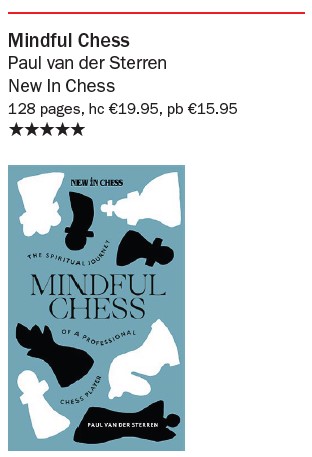 I read Mindful Chess before reading In Black and White which was not the best approach because I missed a little bit of the context. Towards the end of In Black and White, Van der Sterren mentions the importance that meditation assumed in his life and talks a little bit about it. Mindful Chess is both a fuller explanation of this facet of his life, and also in some way a different perspective on his chess career. I must confess that I am not the natural audience for such a subject – too restless, too task-oriented, somewhat lacking in introspection. But any subject can make sense and interest you when you have something familiar to relate it to, and the intertwining of mindfulness with chess brought it closer for me than anything else I have ever read.
I read Mindful Chess before reading In Black and White which was not the best approach because I missed a little bit of the context. Towards the end of In Black and White, Van der Sterren mentions the importance that meditation assumed in his life and talks a little bit about it. Mindful Chess is both a fuller explanation of this facet of his life, and also in some way a different perspective on his chess career. I must confess that I am not the natural audience for such a subject – too restless, too task-oriented, somewhat lacking in introspection. But any subject can make sense and interest you when you have something familiar to relate it to, and the intertwining of mindfulness with chess brought it closer for me than anything else I have ever read.
Perhaps the most striking thing was that mindfulness was not what I thought it was. Influenced by the mindfulness app on my Apple Watch, I equated it to conscious thinking, reflection, looking at yourself and your mood, positioning yourself in the world. Whereas mindfulness in Mindful Chess seemed to me precisely about not placing yourself at the centre of your world (and dividing up the world into lots of unique personal instances) but to experience life flowing without intruding on it.
I surprised myself by really enjoying this book, which I think is a tribute to the quality of Van der Sterren’s writing which manages to make difficult (impossible!) subjects seem (almost) accessible and to the fresh perspective that you get on key moments from his chess career. I’m not quite sure what star rating to give to such a book, but I think I’ll simply bundle it with In Black and White and say you just have to get both! 5 stars!
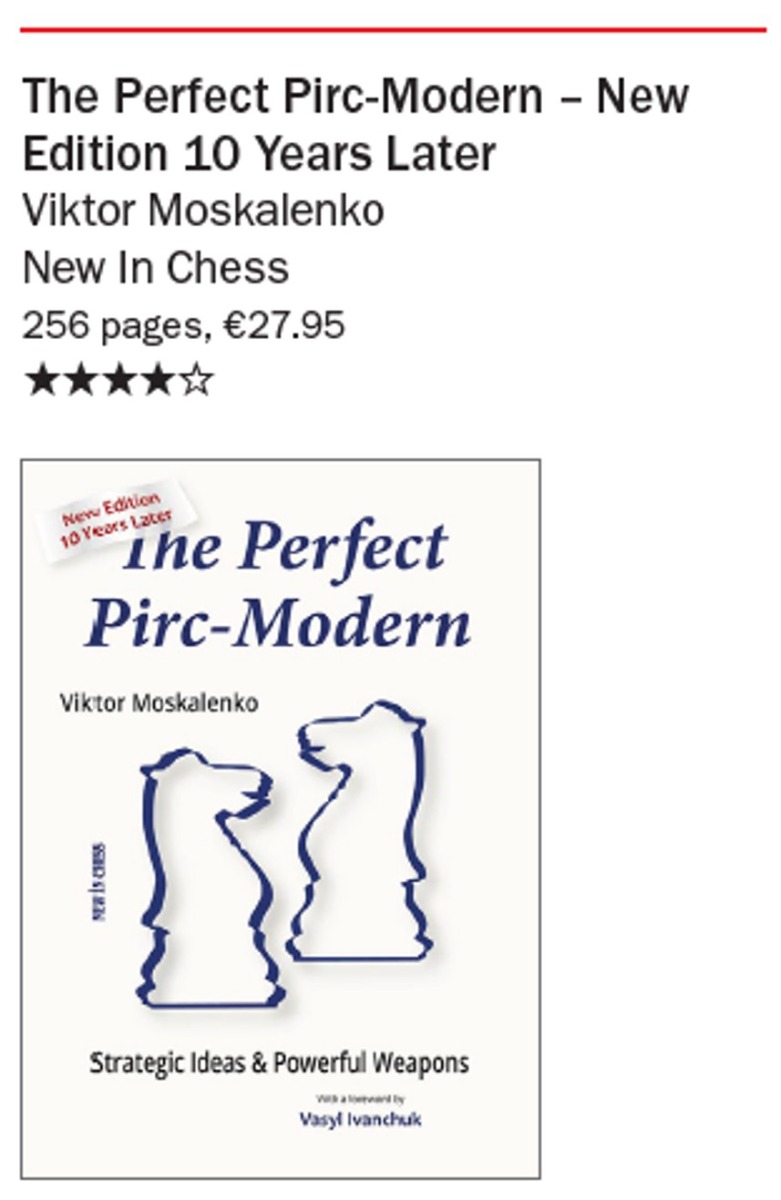 Pirc aficionados get pretty excited when Viktor Moskalenko brings out a book on their opening and the appearance of the revised edition of The Perfect Pirc-Modern (New In Chess) led to a lot of joy when I pointed it out during a video! And you can certainly understand why. Moskalenko isn’t always the most reliable of authors when it comes to engine games or correspondence games in certain lines, but he more than makes up for it with a stream of little ideas – highlighted in the text in his patented Batman-and-Robin-all-action fashion with coloured paragraphs and the word ‘weapon’, ‘puzzle’, ‘keep in mind’ or ‘plan’!
Pirc aficionados get pretty excited when Viktor Moskalenko brings out a book on their opening and the appearance of the revised edition of The Perfect Pirc-Modern (New In Chess) led to a lot of joy when I pointed it out during a video! And you can certainly understand why. Moskalenko isn’t always the most reliable of authors when it comes to engine games or correspondence games in certain lines, but he more than makes up for it with a stream of little ideas – highlighted in the text in his patented Batman-and-Robin-all-action fashion with coloured paragraphs and the word ‘weapon’, ‘puzzle’, ‘keep in mind’ or ‘plan’!
There are so many of these thoughts that you always come away with a Moskalenko book buzzing with possibilities. Indeed, after reading it, I was stimulated to launch a series of videos on the Pirc, simply because Moskalenko had managed to make the opening look like a lot of fun! Moreover, Moskalenko manages to do this in just 242 pages of pleasantly spaced text, which I think is just about perfect for busy readers.
Let me show you just one idea to give you an impression of what you can expect when Moskalenko takes a look at a slightly offbeat Modern move-order.
1.e4 g6 2.d4 ♗g7 3.♘c3 c6
I used this Pirc-Modern move-order a lot when I returned to chess, inspired by nothing more than nostalgic memories of when Julian Hodgson and David Norwood terrorised their opponents with it! It’s great against the Austrian Attack: 4.f4 ♕b6 5.♘f3 d5 is the point, when 6.exd5 ♗g4 is pretty decent for Black (considering you started with 1...g6!).
4.h3 d5 5.♘f3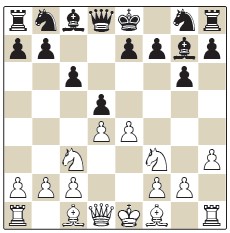 This is rather irritating however. I suffered quite badly as Black – struggling to create any interesting play at all – against Ivo Timmermans in a club match for Amersfoort and rather went off the line after that. However, Moskalenko suggests:
This is rather irritating however. I suffered quite badly as Black – struggling to create any interesting play at all – against Ivo Timmermans in a club match for Amersfoort and rather went off the line after that. However, Moskalenko suggests:
5...dxe4 6.♘xe4 ♘f6 7.♘xf6+ exf6!?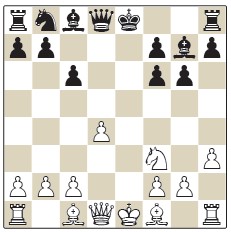 Heading for a rather odd offshoot of the topical Caro-Kann line 1.e4 c6 2.d4 d5 3.♘c3 dxe4 4.♘xe4 ♘f6 5.♘xf6+ exf6. It’s not anything revolutionary but it’s fresh and may give you some unexpected joy in playing a line you had problems with!
Heading for a rather odd offshoot of the topical Caro-Kann line 1.e4 c6 2.d4 d5 3.♘c3 dxe4 4.♘xe4 ♘f6 5.♘xf6+ exf6. It’s not anything revolutionary but it’s fresh and may give you some unexpected joy in playing a line you had problems with!
All-in-all a very nice opening book. The current reputation of the Pirc among super-GMs and their trainers is not high, judging from a conversation recently on my Twitter feed (the suggestion is that the Pirc might be a forced loss at correspondence chess!) but if you’re an addict, you can’t do without this book! 4 stars!
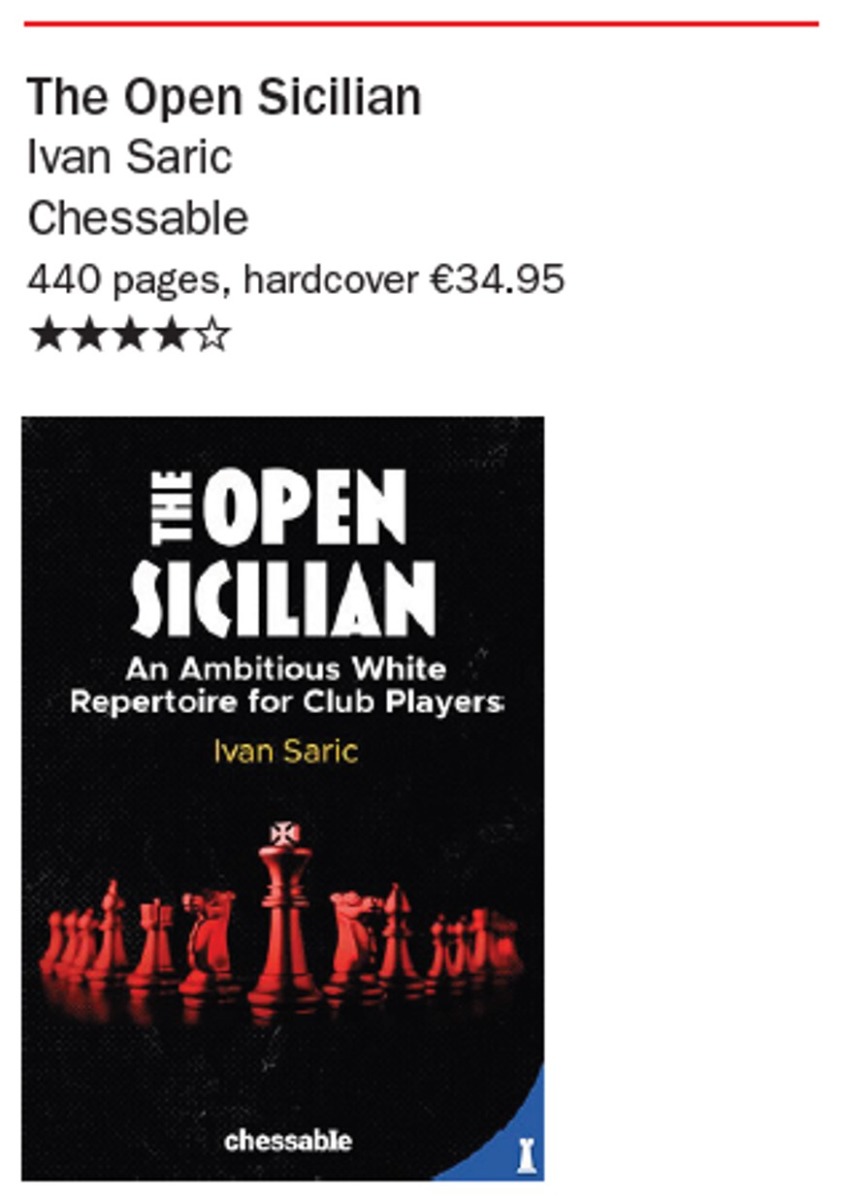 The Open Sicilian by Croatian grandmaster Ivan Saric is the latest in the growing line of Chessable-course-to-book offerings. I keep on saying it: these Chessable books look absolutely lovely! Hardback format with colour pages and a really pleasant-to-read typeface: gorgeous! Saric is well-known as a sharp and theoretical 1.e4 player and he delivers more than 400 pages of a well-crafted opening repertoire for White in the Open Sicilian with a mix of cutting-edge theory and clever move-orders.
The Open Sicilian by Croatian grandmaster Ivan Saric is the latest in the growing line of Chessable-course-to-book offerings. I keep on saying it: these Chessable books look absolutely lovely! Hardback format with colour pages and a really pleasant-to-read typeface: gorgeous! Saric is well-known as a sharp and theoretical 1.e4 player and he delivers more than 400 pages of a well-crafted opening repertoire for White in the Open Sicilian with a mix of cutting-edge theory and clever move-orders.
I’ve been diving into opening theory again recently and that triggered me for one omission: the 1.e4 c5 2.♘f3 d6 3.d4 cxd4 4.♘xd4 ♘f6 5.♘c3 g6 6.♗e3 ♘c6 7.f3 h5!? system in the Dragon that has been scoring quite nicely for Richard Rapport and Dimitry Andreikin at blitz recently.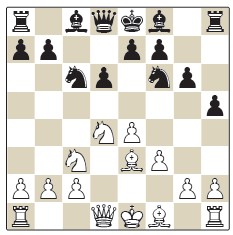 I noticed it particularly because Saric lost a fairly spectacular game as White against Rapport back in 2021! It’s also amusing to see disagreements – or rather healthy scepticism – between Chessable courses, as Saric takes a recommendation for Black in Giri’s (excellent) Dragon Chessable course and book and suggests that White should have promising practical chances despite an objectively equal evaluation.
I noticed it particularly because Saric lost a fairly spectacular game as White against Rapport back in 2021! It’s also amusing to see disagreements – or rather healthy scepticism – between Chessable courses, as Saric takes a recommendation for Black in Giri’s (excellent) Dragon Chessable course and book and suggests that White should have promising practical chances despite an objectively equal evaluation.
1.e4 c5 2.♘f3 d6 3.d4 cxd4 4.♘xd4 ♘f6 5.♘c3 g6 6.♗e3 ♗g7 7.f3 0-0 8.♕d2 ♘c6 9.0-0-0 d5 10.exd5 ♘xd5 11.♘xc6 bxc6 12.♗d4 e5 13.♗c5 ♖e8 The latest wrinkle and Anish’s choice above the traditional 13...♗e6.
The latest wrinkle and Anish’s choice above the traditional 13...♗e6.
14.♘e4 ♕c7 15.h4 f5 16.♘d6 ♖d8 17.♘xc8 ♖axc8 18.h5 ♘b6 19.♗xb6 ♖xd2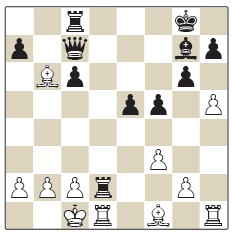 20.♗c4+ ♔f8 21.♗xc7 ♖xd1+ 22.♖xd1 ♖xc7 23.hxg6 ♗h6+ 24.♔b1 hxg6 25.♖d6 ♔g7
20.♗c4+ ♔f8 21.♗xc7 ♖xd1+ 22.♖xd1 ♖xc7 23.hxg6 ♗h6+ 24.♔b1 hxg6 25.♖d6 ♔g7
Saric notes: ‘Up to this moment, we have been following a forcing line recommended by Giri in his Dragon book. White has many ways to continue here. Objectively Black should be able to draw this endgame, but the real question is how many players in the world could hold it’.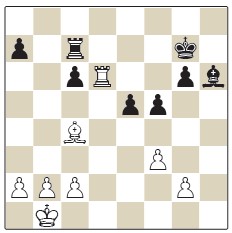 Saric then suggests:
Saric then suggests:
26.♖e6
‘Not the only move for White but it prevents ...e4. Other interesting options are 26.c3, 26.a4, 26.b4...’
So who is right? Well, in a way this comment is a little unfair to Anish, who actually carries on the analysis much further in his course with three sample lines. However, there is certainly a large element of truth to Saric’s observation. When I tried out the endgame after 25...♔g7 as Black in a series of games against a weakened (limited search) Leela (my acid test for determining the intuitive playability of lines) the results were umm... not shareable... I felt I was playing fairly logically but I kept getting my pieces tangled and ending up well short in the pawn races on opposite wings. For myself, I’d need a healthy portion of hard study to stand a chance of holding this endgame as Black.
So a pretty good book with plenty to interest the aggressive 1.e4 player looking for repertoire ideas in the Open Sicilian. It’s worth something like 4-and-a-bit stars so we’ll stick with 4!
